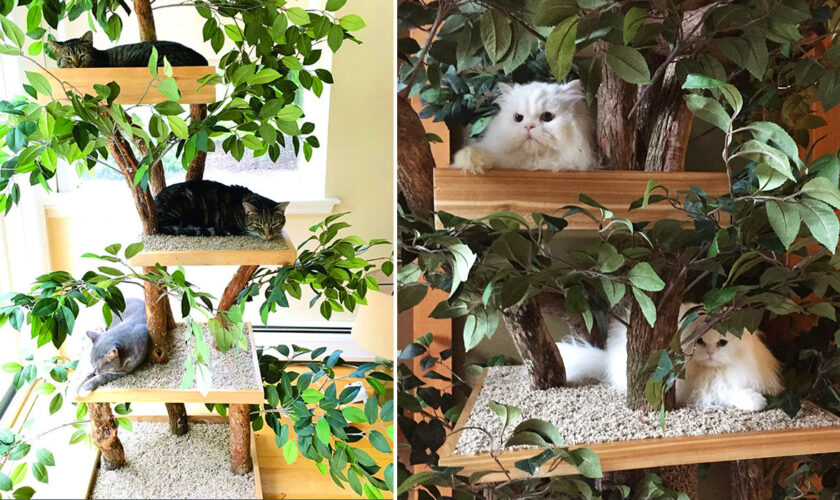Cat trees are considered a cat’s ultimate adventure playground, vantage tower, and refuge all rolled into one. They also provide the crucial function of allowing cats to sharpen their claws. Cat trees are a must-have in every home to keep your cat entertained, active, and happy.
When building a cat tree yourself, you can customize it to your taste, in terms of the size and design of the tree as well as whether it will match up with the home decor; as well as to your cat’s particular preferences. So if you are thinking of building a cat tree, you can follow this expert advice to make sure your cat companion has all that they require.
Why Does Your Cat Need a Cat Tree?
Cat habitats should include areas for climbing, scratching, perching, and hiding. Since cats need to climb and perch, it is the cat owner’s responsibility to provide them with the proper means to do so. Indoor cats often find a safe, high perch at the top of a cat tree, cat shelves, on the top of your bookshelf or on another piece of furniture that wasn’t meant for your cat to climb.
A cat tree serves as a substitute tree for your cat. The goal is to provide areas in your home for your cat to perform species-specific behaviors. This is why an indoor cat tree is a must-have in any household with a pet cat.
What Are The Best Places To Set Up A Cat Tree?
Cats can observe their surroundings from a safe vantage point when they are high up. They can search for prey while remaining out of sight of predators by staying high. A high perch allows your cat to escape from anything that irritates them. This is especially important if your cat lives with other animals or if you have children who are unaware that they should not be too bothersome with cats. Ideally, your cat tree should be placed near a window, so they can soak up the warm sun rays from their perch, and enjoy watching all the feathered and furry prey out the window.
What Kind Of Cat Tree Designs Are Best Suited For Your Cat?
You can find cat trees in a variety of shapes and sizes, from petite ones suitable for apartments to full-sized ones that fill an entire room. Whether your cat tree is freestanding or wall-mounted, ensure that it is securely anchored and safe for your cat to climb. For stability, demountable cat trees should have a heavy base and potentially be bolted to the floor or wall. If you’re wondering what size is the best, that would depend on the space you have and how much you want to spoil your kitty. You should design a cat tree that gives each of your cats the perfect perch for viewing, a cosy spot to curl up for nice long naps, and an area for scratching when your kitties feel like sharpening those claws.
What Materials Are Ideal For A Cat Tree?
For building your cat tree, you can use any type of material; from tree branches to dimensional lumber that you can get at a hardware store or perhaps even cardboard. Consider choosing nontoxic coatings for dimensional lumber if you plan to paint or stain it, since your cat could scratch the surface and would ingest flakes.
To Conclude
The most important factors to consider are stability and the use of materials that will not harm your cat. If you install cat shelves instead of a traditional cat tree, make sure the surface is not slippery. Cat shelves don’t have to be anything fancy; a repurposed shelf or a piece of plywood secured to inexpensive shelf brackets will probably be sufficient. However, if you want to make sure your pet gets the best, you can now shop cat trees in UAE at Dubai Pet Food.
